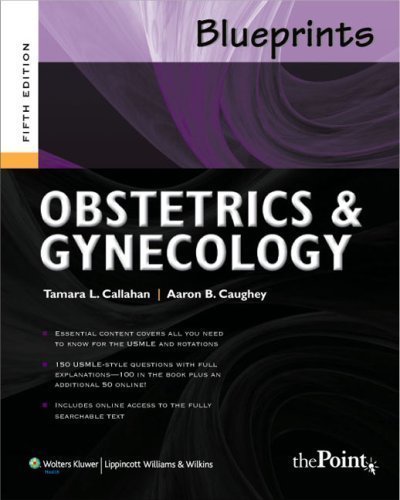If you’re working your way through your OB/GYN rotation or you’re just about to get started, you’re likely thinking about how to ace your shelf exams. The shelf exam for this portion of your medical school training is an important aspect, and it’s something that you need to do well on, whether you’re actually planning to continue on with OB/GYN for a profession or not.
Well, when it comes to the NBME OBGYN shelf, there are a number of things that you probably want to know. We’re going to take a little closer look at some of the most essential aspects, and we’re going to consider just which materials you should be using to study. That way, you can get on with your next rotation successfully, and whether you’re trying to honor or not, you can at least feel confident with your results.
Overall, we want to make sure you know the best resources for your OBGYN rotation and that you’re going to be fully prepared to take the exam. No matter where you are in studying for your exam or working through your rotation, this is going to help you get ready and learn the things that are most important and that have the best potential to get you a better score. So if you want to know how to pass OBGYN shelf, then you’ll need to take a look at these tips.
Who Should Study for NBME OB/GYN Shelf?
Should you even bother studying for the OB/GYN shelf? Is this something that you need to take? Well, if you’re taking an OB/GYN rotation, it most definitely is. If you’re required to take an OB/GYN course through your university, it’s also an excellent idea to take this exam, and it may even be necessary in order to get the credit you need.
The short answer then is that if you’re taking the class or taking a clerkship or rotation, then chances are you should be signing yourself up for this exam. Keep in mind that these scores are not designed to give you credit toward your licensure. These are entirely separate exams that are only intended to get you credit toward your studies or for your clerkship.
Whether you are planning to pursue a career in OB/GYN or not is not relevant to whether you should take the exam. If you are required to take the clerkship or rotation, you will likely need the exam. Those who are not looking to pursue this as a career path may not need to focus as much attention on the exam (though high exam grades will help you with your grades in school); however, they will still need to take the exam.
How to Get Started Studying for OB/GYN Shelf?
Okay, so you’re pretty sure you should be studying for this exam and that you’re going to take it, but how are you even supposed to get started? You want to make sure that you’re starting out right because you already know that’s how you’re going to set yourself up for success. Well, it’s actually not as difficult as you might think.
1. Start with books and Qbanks.
This sounds pretty obvious, but the most important thing you can do is start reading through the books you’ve chosen (we’ll give you recommendations in a moment) and working on your Qbanks as soon as possible. The sooner you start, the more time you’re going to have to actually understand the information.
2. Divide out your studying.
You want to make sure that you’re studying every day, but you don’t need to study during all of your waking hours. Instead, look at the materials that you want to use and how long you have to study to create your OBGYN shelf study schedule. Then, divide out the amount of content you need to complete each day to get you to that goal. Want to get the Uworld questions done in 2 weeks? You’ll need to do 20 a day. Want Case Files completed in 3 weeks? You’ll need to do four a day.
3. Focus on normal.
Make sure you have a good understanding of just what is considered ‘normal’ in OB/GYN. This is something that you’re going to get a lot of on your exam, and the exam question may attempt to trick you into believing that something is not normal even when it is. By memorizing what normal results are, you’ll be better prepared for many of the questions.
4. What topics are covered on the OB/GYN shelf exam?
Let’s take a look at the actual topics that you’re going to need to know when it comes to your shelf exam. You want to make sure that you’re focusing all of your attention on these areas and that you’re not getting bogged down with information and content that’s not actually going to be tested. While you may want to learn that information for later, when you’re actually practicing, it’s something to be filed away at this point. And you don’t need to spend extra time on it.
| General principles including normal findings and well patient care | 1-5% |
| Endocrine system | 1-5% |
| Social sciences | 1-5% |
| Other systems | 5-10% |
| Pregnancy, childbirth & the puerperium | 40-45% |
| Female reproductive system & breast | 40-45% |
Specifically, within these areas, you’ll find these subtopics to consider. Each of these are the most common areas of focus. Keep in mind that the majority of the content is based around ambulatory care, with a smaller amount focused on inpatient and a very low amount focused on emergency department care.
1. Urinary incontinence, including subtypes, associated risk factors, and preferred treatments.
2. Ovarian tumors, including categories, subtypes, incidence, and mortality rates.
3. Sexually transmitted infections, including diagnosis and treatment of vaginal infections, TORCH infections, and symptoms in newborns.
4. Contraception, including types, benefits, and drawbacks, contraindications, and efficacy.
5. Amenorrhea, including etiologies, workup, and diagnostics, optimal treatment, and management.
6. Infertility, including male and female causes, etiologies, and workups.
7. Abnormal bleeding, including risk stratification of patients.
8. Hypertensive states of pregnancy, including risk factors, diagnostic criteria, and best next steps.
9. Cervical cancer screening, including general approaches, significant classes of abnormalities on a pap smear, and management of classifications.
10. Breast cancer screening, including ACOG guidelines, risk factors, and options for management.
The Best Books for Prepping for the OB/GYN Shelf Exam
The next thing we’re going to talk about is the different books that you should be looking at. We have three that are actively recommended by students and that have been used by many people to get the best possible grades on their exams and clerkships. If you’re looking for the best resources for your OBGYN rotation, then these are definitely it.

Case Files
This series of books is one that is definitely popular among students studying for shelf exams in a number of different areas, and OB/GYN is no different. This book focuses on high-yield information without overwhelming you with too many facts and procedures. You’ll also get tables, chapter quizzes, and figures throughout the book that will help the information stick.
You’ll get a total of 60 real-life cases, and you’ll have discussions that help you to focus your attention on the critical information and clinical pearls. You don’t need just to sit down and memorize a lot of facts, and that’s what this book is designed to keep you from. Overall, you’re going to have an easier time remembering the things you need to know because they’re applied to real situations instead of just rote memorization.
What Makes it Unique:
- True-to-life cases for review and study
- Plenty of practice questions and new updates on information
Why Choose This OB/GYN Shelf Exam Book:
- Focus on high-yield information
- No rote memorization of facts
- Brand new, never been used. Free from wear, highlighting and markings
- Toy, Eugene (Author)
- English (Publication Language)
Last update: 2024-04-28

Blueprints Obstetrics & Gynecology
This is a very strongly recommended book that many students have used to study for different exams as well. The obstetrics & gynecology version is designed to prepare you for your rotation as well as for the exam. It’s actually designed for those who don’t have a lot of time to study in between portions of their rotation, and it uses very short and dedicated chapters to get the information across.
Content is focused on research, therapy, key concepts, and other short information that students can take a closer look at during even short periods of time. It’s filled with tables, figures, and board-style questions, which helps to prepare you for the exams you’re going to have to take. Not only that, but it has the latest information and most up-to-date research included.
What Makes it Unique:
- Case-based questions to help you apply the information you learn
- Ideal for medical professionals in all areas including doctors, students, and nurses
Why Choose This OB/GYN Shelf Exam Book:
- Information presented in easy to digest, short blurbs
- Great deal of content provided about each topic
- unknown author (Author)
- Lippincott Williams & Wilkins (Publisher)
Last update: 2024-04-28

Pre-Test Obstetrics & Gynecology
This is actually kind of a combination book and question bank, but since it’s in book format, we’re going to put it here. This book is actually about 500 different practice questions that you can use to really get a good handle on the questions you’ll find on your exam. You get mostly high-yield information, though there’s some extraneous content included too.
It’s advertised as the closest thing to the actual test, and it’s actually reviewed by students who have taken the exam. This is supposed to make it even more realistic and make sure that you’re getting questions that you may see on your exam or at least formatted the same way. It also gives you information about both the right and wrong answers that are listed, so you know not only why one answer is right, but why the other answer is wrong as well.
What Makes it Unique:
- Questions are formatted and designed based on the exam
- Can be used to help refresh your memory no matter where in your studies
Why Choose This OB/GYN Shelf Exam Book:
- Right and wrong answers are fully explained
- Offers a wide variety of different questions and topics
- Sims, Shireen Madani (Author)
- English (Publication Language)
- 368 Pages - 03/18/2016 (Publication Date) - McGraw Hill / Medical (Publisher)
Last update: 2024-04-28
The Best Questions and QBanks for the OB/GYN Shelf Exam
Question banks are a great way to study for your shelf exam because they give you practice for what you’re going to see. Not only that, but they’re generally simple enough to take with you wherever you go because of most offer apps or mobile versions of their websites. That way, even when you only have a few minutes during a commute or over your breaks, you’ll be able to run through a few questions. But which are the most critical question banks to look at? Well, we’re going to take a look at some OBGYN shelf questions.
Uworld – This is one of the most popular question banks for just about everything in medicine, so make sure you’re looking into the subscription. You may even want to keep it throughout your medical schooling since you’ll likely always be looking at one subject or another. You will find several sections that you can study for OB/GYN, as well.
APGO – If you’re looking for some high yield questions, you’re going to want this system. It’s going to be entirely different from Uworld in most ways, including the overall interface, and it’s going to give you different objectives that you can study as well, covering the entire field of OB/GYN.
UWISE OBGYN – This is another area where you’re going to find a large number of questions. In fact, there are over 600 questions available in this set, and you’re going to have the opportunity to review all the different aspects of OB/GYN in separate sections. This gives you the ability to focus your attention on the areas that you’re having more trouble with.
ANKI – If you have access to Anki decks or if you’re interested in creating your own, this can be a great resource as well. There are very few restrictions on just what you can put onto your Anki cards, which makes it great for medical and scientific studying. You can generally use any type of symbols and equations, for example.
How and When to Use Blueprints for Learning OB/GYN Shelf
If you’re looking to use this textbook (which you absolutely should), you want to make sure that you are using it right. Well, the truth is that the only thing you really need to do is make a plan to sit down and read it and then review the information. The most important part of the process is to make sure that you’re doing it all at the right time. That way, you can get through it all in the right amount of time.
Start early. First up, make sure that you’re starting to read this textbook early on in your studying. It’s a rather intense book with a whole lot of information, but that means it’s going to take you a decent amount of time to read through the entire thing. You’re going to need to start as early as you can to get through.
Week one. By the end of the first week of your rotation, you should be about 20% or more done with the book. You’re going to need to read through it relatively quickly so that you can get the information and be able to really retain it.
Week four. By now, you should be about 80% done with the book, and you should have a pretty good understanding of the information that you’ve already read through. You should be reviewing as you move along, and you should absolutely be focused on your Qbanks as well.
Week six. This is where you should be finished with the book. You want to make sure you’re timing yourself out throughout the six weeks that you have to study so that you don’t end up at the end of your rotation when you need to take the shelf, and you haven’t gotten all the way through your study materials.
Review at the end. Once you’re finished, you can go back through any of the last-minute areas you want to review again. Maybe you’re concerned about some sections, or you think you missed something important. This is an excellent time to go back again to pick up anything you might have struggled with the first time.
Wrapping Things Up: 3 Final Tips for How to Study for OB/GYN Shelf
Finally, let’s take a quick look at just three final tips for what you should be doing in your studies. We’ve already gone over some of the ways to get started and the books and question banks you should be looking at. So now we’re going to keep it a little bit more brief and straightforward. These are three last things that you want to take a look at to make sure that you’re prepared for the shelf.
1. Take a practice test.
There are actually several different NBME practice exams available, and taking at least one (or preferably two) will help you get a good idea of where you stand. This is going to help you figure out what you need to study and where you’re already doing well. It also just plain gives you a feeling for what taking the test is going to be like and the type of questions you’re going to see.
2. Redo the question banks.
If you go through the question banks before your study time is up, then go back through them again. You can generally mark questions that you struggle with and then review those questions, or you can even do randomized questions and quizzes through some of the banks. Doing these will help you remember the information and give you better success than going through the books.
3. Watch some videos.
OnlineMedEd is a great place to check out videos and get some additional information that you won’t get anywhere else. If you’re a visual learner, this is a great way to get some extra help, and you’ll be able to focus on different topics and areas that you struggle with the most. Make sure that you’re interspersing these videos with other research and studying, however.
Hopefully, all of this information is going to get you prepared for your OB/GYN shelf and make sure that you get a good score. Whether you’re planning to continue on with OB/GYN, how to honor your OBGYN rotation, or you’re looking just to pass your clerkship and move on, you need the right OB/GYN study material to get you there.
Did you enjoy this post? Then you may like our other shelf study guides:
> How to Study for Family Medicine Shelf
> How to Study for Surgery Shelf
You may also like our section on the site for medical school study tips.











